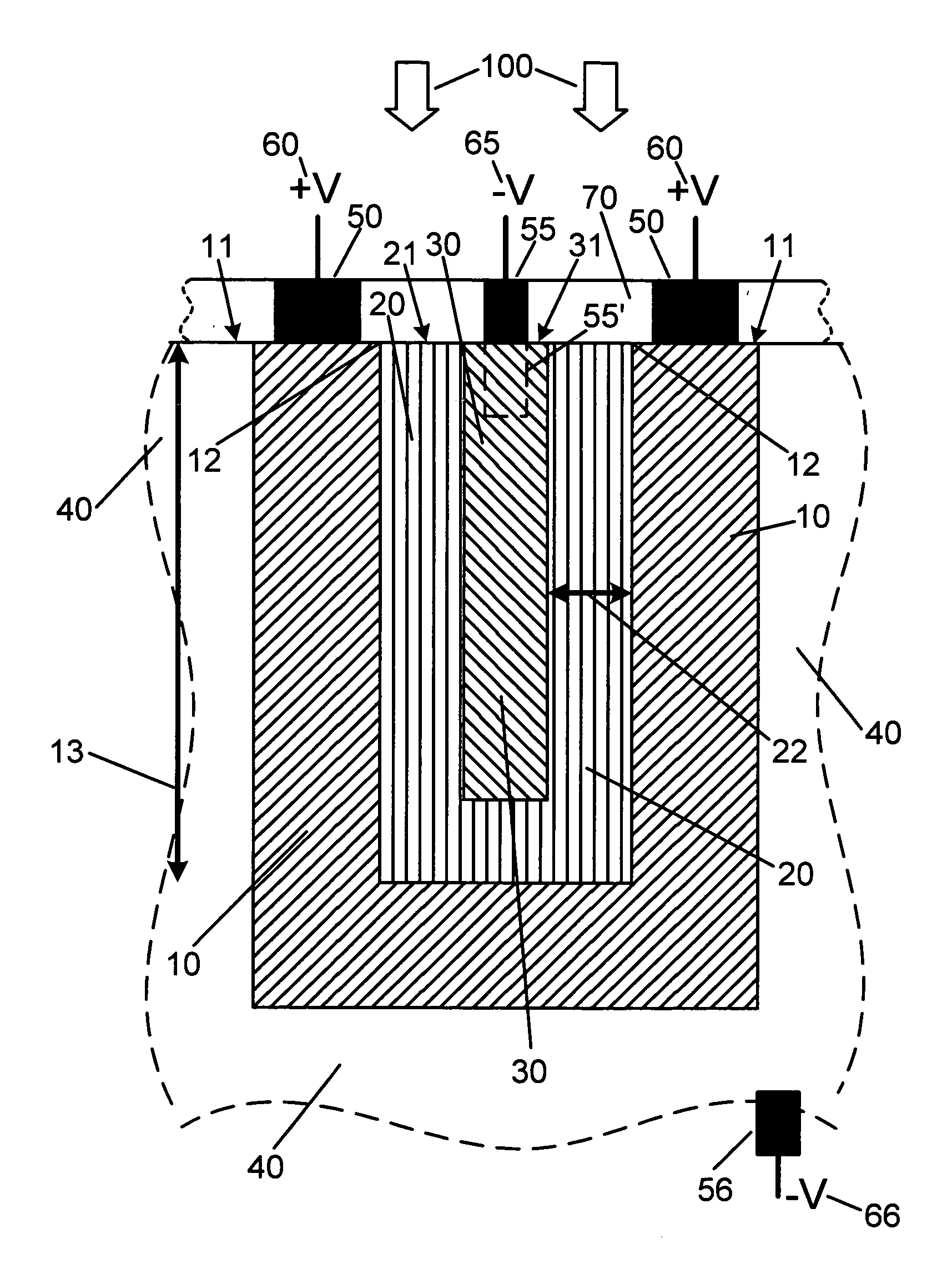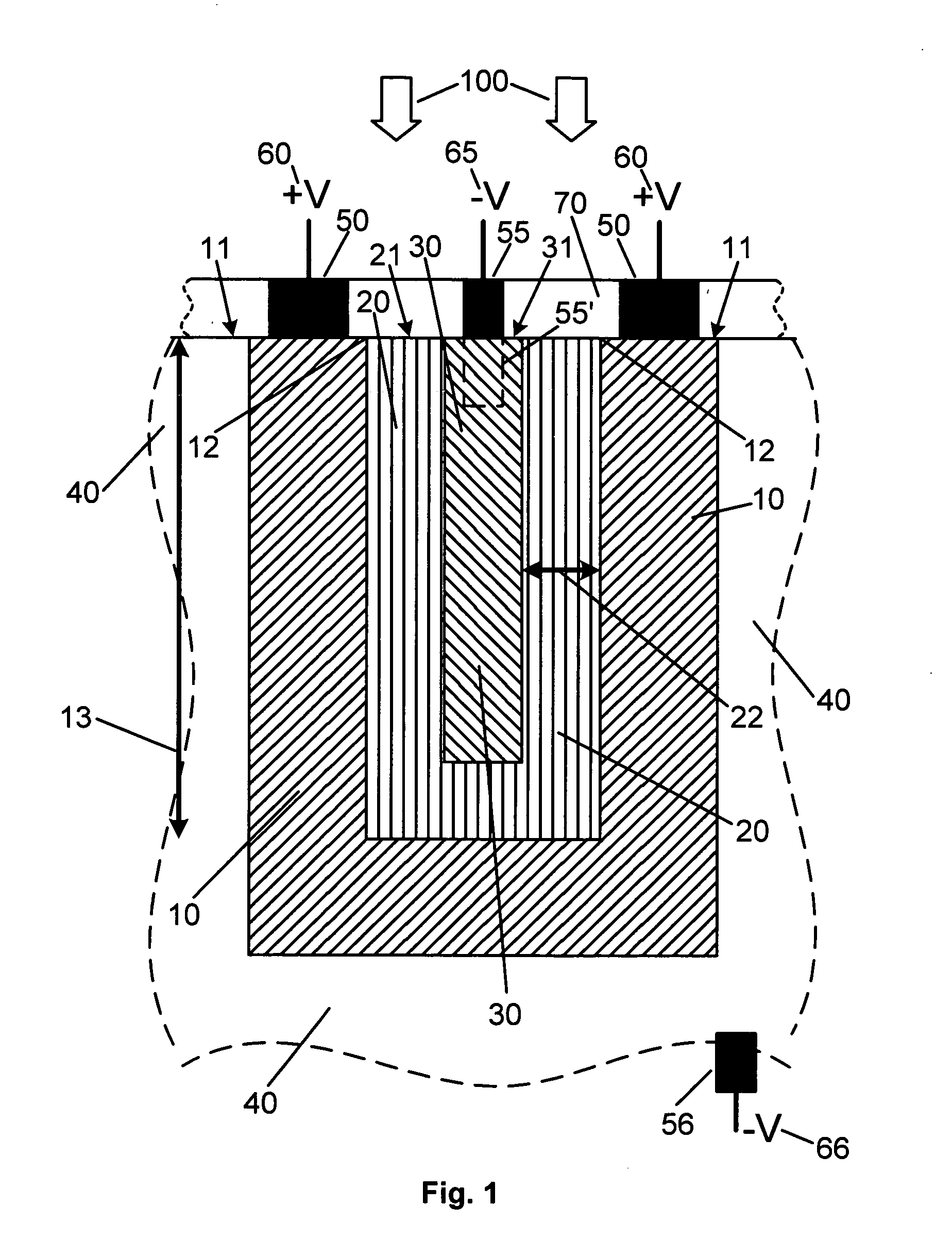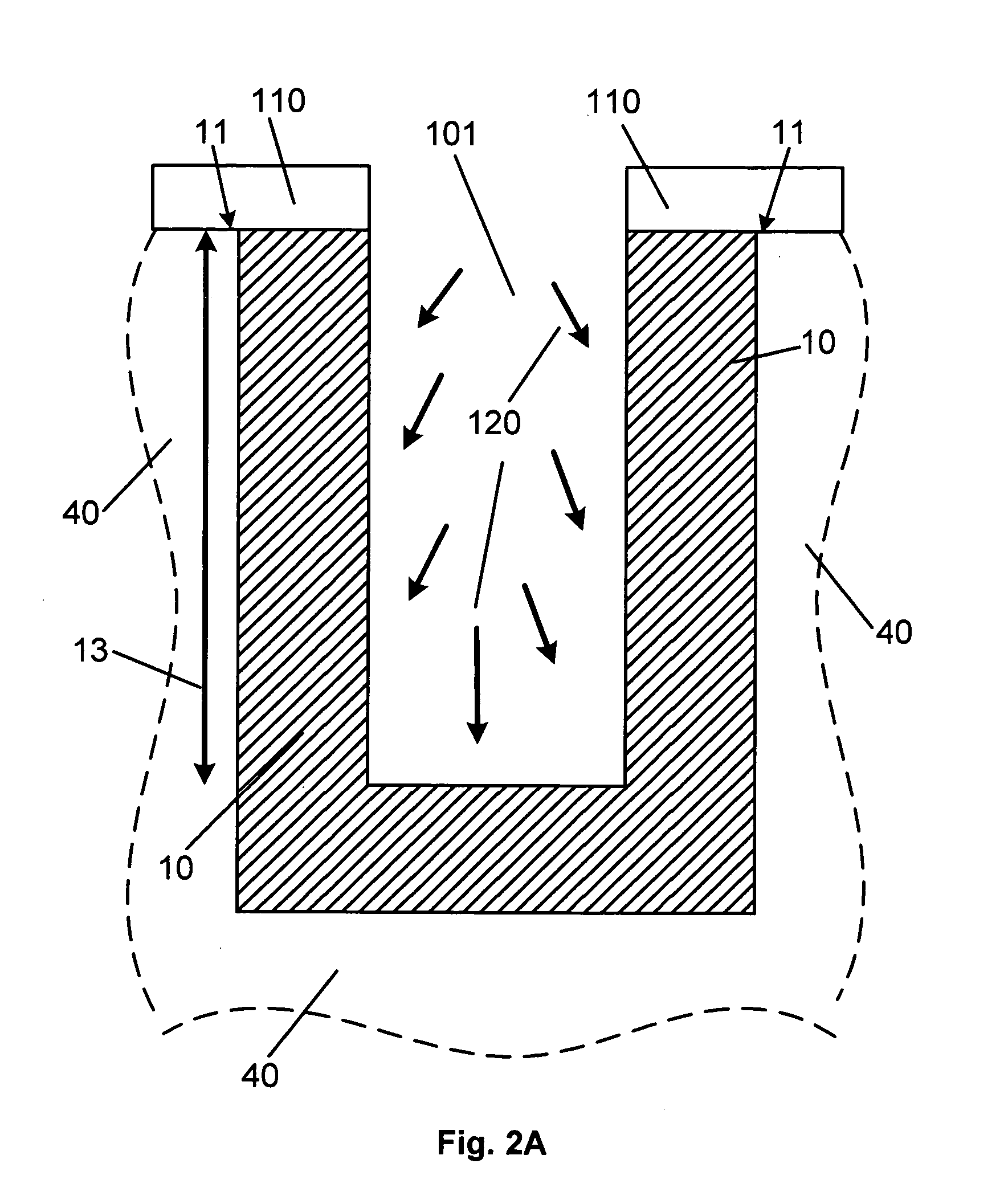Photodetector with hetero-structure using lateral growth
a hetero-structure, optical detector technology, applied in the field of optical detectors, can solve the problems of limited optical applications, limited ge concentration of x/sub>alloy layer grown on silicon substrate, limited benefit of adding ge, etc., and achieves fast response, large lateral field, and high speed
- Summary
- Abstract
- Description
- Claims
- Application Information
AI Technical Summary
Benefits of technology
Problems solved by technology
Method used
Image
Examples
Embodiment Construction
[0010]FIG. 1 schematically shows in cross section an exemplary embodiment of a heterojunction photodetector. A silicon (Si) body 40, typically with dimensions larger than the photodetector, (hence only a dotted outline is shown on FIG. 1), contains a Si well 10. The body 40 and well 10 are of the same material. The distinction, when there is any, between the two is in their doping. The well is heavily doped, to a first doping level, in the range of >1018 / cm3, while the body usually has at least an order of magnitude lower doping, typically 17 / cm3. Both the body and the well are single crystal, or monocrystalline Si. In a representative embodiment the body is a Si wafer, such as customarily found in the microelectronics art.
[0011] The well 10 has a first doping level and a first conductivity type. In exemplary embodiments the first conductivity type can be either n-type or p-type. The well 10 has a surface plane 11, which is essentially the plane of the body. Contained in the well a...
PUM
 Login to View More
Login to View More Abstract
Description
Claims
Application Information
 Login to View More
Login to View More - R&D
- Intellectual Property
- Life Sciences
- Materials
- Tech Scout
- Unparalleled Data Quality
- Higher Quality Content
- 60% Fewer Hallucinations
Browse by: Latest US Patents, China's latest patents, Technical Efficacy Thesaurus, Application Domain, Technology Topic, Popular Technical Reports.
© 2025 PatSnap. All rights reserved.Legal|Privacy policy|Modern Slavery Act Transparency Statement|Sitemap|About US| Contact US: help@patsnap.com



